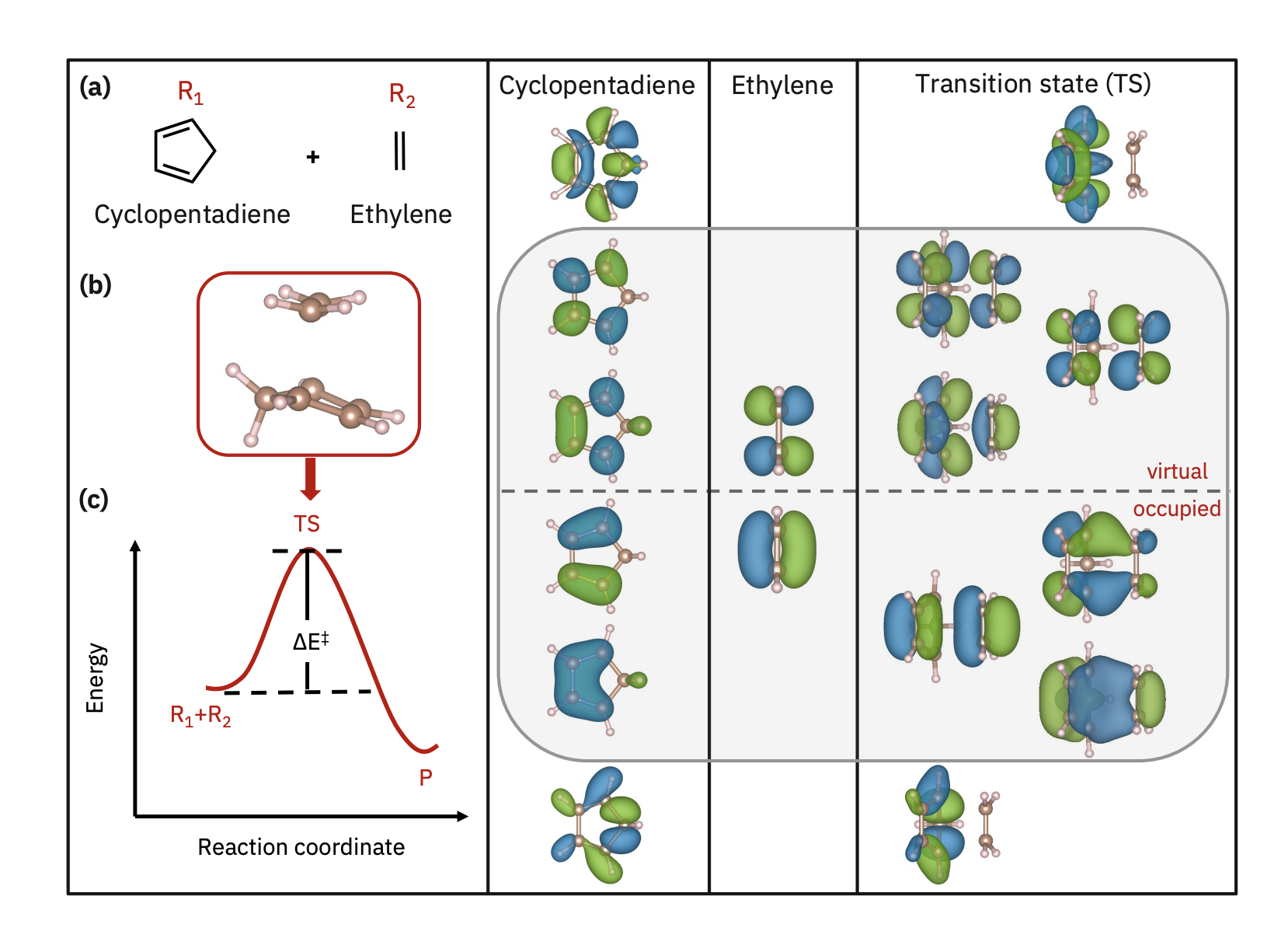IBM Quantum and Cornell University researchers have successfully simulated a Diels-Alder chemical reaction using quantum algorithms on IBM quantum hardware. The team aimed to calculate the activation barrier of a reaction between ethylene and cyclopentadiene using up to 8 qubits. The results demonstrated the potential of quantum algorithms and hardware in accurately calculating activation barriers, a significant challenge for quantum computing algorithms. The study also highlighted the Diels-Alder reaction as a valuable testbed for near-term quantum computing algorithms and hardware. This research could revolutionize the study and understanding of chemical reactions.
What is the Potential of Quantum Algorithms in Chemical Reactions?
The simulation of chemical reactions is a promising application of quantum computers. A recent study by researchers from IBM Quantum and Cornell University explored this potential using a Diels-Alder reaction as a test case. The Diels-Alder reaction, discovered by Otto Diels and Kurt Alder in 1928, is a fundamental transformation in organic chemistry, widely used for the construction of complex natural products and the design of novel materials. The reaction occurs between a conjugated diene and an alkene, producing a cyclic compound, typically a six-membered ring.
The researchers’ specific goal was to calculate the activation barrier of a reaction between ethylene and cyclopentadiene, forming a transition state. To achieve this, they used quantum algorithms for near-term quantum hardware, entanglement forging, and quantum subspace expansion, along with classical post-processing many-body perturbation theory. The simulations were conducted on IBM quantum hardware using up to 8 qubits. The results showed accurate activation barriers in the reaction between cyclopentadiene and ethylene, accounting for both static and dynamic electronic correlation.
This work illustrates a hybrid quantum-classical computational workflow to study chemical reactions on near-term quantum devices. It showcases the potential of quantum algorithms and hardware in accurately calculating activation barriers, which is a significant challenge for quantum computing algorithms.
How Does the Diels-Alder Reaction Serve as a Testbed for Quantum Computing?
The Diels-Alder reaction’s widespread importance and unique challenges make it a valuable testbed for near-term quantum computing algorithms and hardware. The breaking and formation of bonds in the course of the reaction may lead to electronic wave functions with a multi-reference character, which can be captured to zeroth order by accurate active-space calculations. The energetics of the reaction arise from a complex interplay between static and dynamic electronic correlation, the latter resulting from electronic transitions outside the active space.
The reactivity and selectivity of the Diels-Alder reactions hinge on the characteristics of their transition states, which are typically more sensitive to approximations in the solution of the Schrödinger equation than reactants and products due to the presence of partial bonds. Therefore, accurate calculations of the Diels-Alder reaction pose a substantial challenge to quantum computing algorithms since they require accounting for both static and dynamic electronic correlation in reactants, products, and transition states.
In this study, the researchers studied the prototypical example of a Diels-Alder reaction between cyclopentadiene and ethylene, reacting in a synchronous aromatic type fashion. The reorganization of π-bonds in cyclopentadiene and ethylene during bond formation leads to a bridged six-membered ring compound.
What Techniques Were Used in the Study?
The researchers employed hybrid quantum-classical algorithms to solve the Schrödinger equation in an active space on a quantum computer and then recover dynamical electronic correlation through classical post-processing. For active-space simulations, they used a qubit-reduction technique called entanglement forging to define a variational ansatz in the context of the variational quantum eigensolver (VQE) method.
To improve the quality of active-space simulations beyond the level of accuracy afforded by entanglement forging, they used a quantum subspace expansion based on single and double electronic excitations from the entanglement forging wavefunction. For recovering dynamical electronic correlation, they integrated entanglement forging and quantum subspace expansion with second-order perturbation theory.
The researchers demonstrated the proposed algorithmic workflow, active-space calculations on quantum computers, and classical post-processing exemplified by perturbation theory to recover dynamical electronic correlation on classical simulators and quantum hardware using up to 8 qubits and error mitigation techniques.
What Were the Results and Implications of the Study?
The researchers were able to compute the activation energy of the Diels-Alder reaction using the proposed algorithmic workflow. The results were obtained on quantum simulators and quantum devices, demonstrating the potential of quantum algorithms and hardware in accurately calculating activation barriers.
The study’s findings have significant implications for quantum computing and its application in chemical reactions. The successful simulation of the Diels-Alder reaction on a quantum computer showcases the potential of quantum algorithms and hardware in investigating chemical reactions. It also illustrates a hybrid quantum-classical computational workflow to study chemical reactions on near-term quantum devices.
The study also highlights the challenges and unique aspects of the Diels-Alder reaction, making it a valuable testbed for near-term quantum computing algorithms and hardware. The researchers’ work provides a foundation for further exploration and refinement of quantum computing algorithms for near-term quantum devices.
What is the Future of Quantum Computing in Chemical Reactions?
The successful simulation of the Diels-Alder reaction on a quantum computer opens up new possibilities for using quantum computing in chemical reactions. The ability to accurately calculate activation barriers using quantum algorithms and hardware could revolutionize the study and understanding of chemical reactions.
The researchers’ work provides a promising starting point for further exploration and refinement of quantum computing algorithms for near-term quantum devices. As quantum computing technology continues to advance, it is likely that its application in chemical reactions will become increasingly sophisticated and accurate.
The study also highlights the need for continued research and development in quantum computing algorithms and hardware. The unique challenges posed by the Diels-Alder reaction, and likely other chemical reactions, require innovative solutions and advancements in quantum computing technology. The future of quantum computing in chemical reactions is promising, but it will require ongoing investigation and innovative advancements.
Publication details: “Simulation of a Diels-Alder Reaction on a Quantum Computer”
Publication Date: 2024-03-12
Authors: Ieva Liepuoniute, Mário Motta, Thaddeus Pellegrini, Julia E. Rice, et al.
Source: arXiv (Cornell University)
DOI: https://doi.org/10.48550/arxiv.2403.08107

